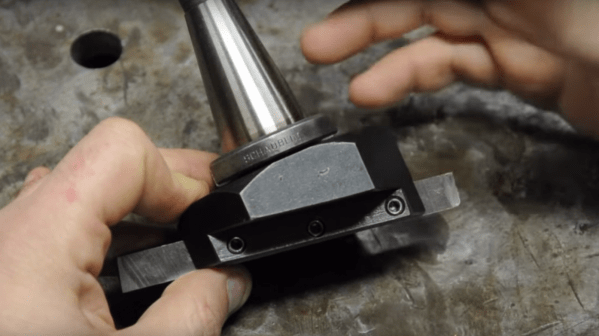Milling machines can be pretty intimidating beasts to work with, what with the power to cut metal and all. Mount a fly cutter in the mill and it seems like the risk factor goes up exponentially. The off-balance cutting edge whirling around seemingly out of control, the long cutting strokes, the huge chips and the smoke – it can be scary stuff. Don’t worry, though – you’ll feel more in control with a shop-built fly cutter rather than a commercial tool.
Proving once again that the main reason to have a home machine shop is to make tools for the home machine shop, [This Old Tony] takes us through all the details of the build in the three-part video journey after the break. It’s only three parts because his mill released the Magic Smoke during filming – turned out to be a bad contactor coil – and because his legion of adoring fans begged for more information after the build was finished. But they’re short videos, and well worth watching if you want to pick up some neat tips, like how to face large stock at an angle, and how to deal with recovering that angle after the spindle dies mid-cut. The addendum has a lot of great tips on calculating the proper speed for a fly cutter, too, and alternatives to the fly cutter for facing large surfaces, like using a boring head.
[ThisOldTony] does make things other than tooling in his shop, but you’ll have to go to his channel to find them, because we haven’t covered too many of those projects here. We did cover his impressive CNC machine build, though. All [Tony]’s stuff is worth watching – plenty to learn.
Continue reading “Pretty Fly For A DIY Guy” →













